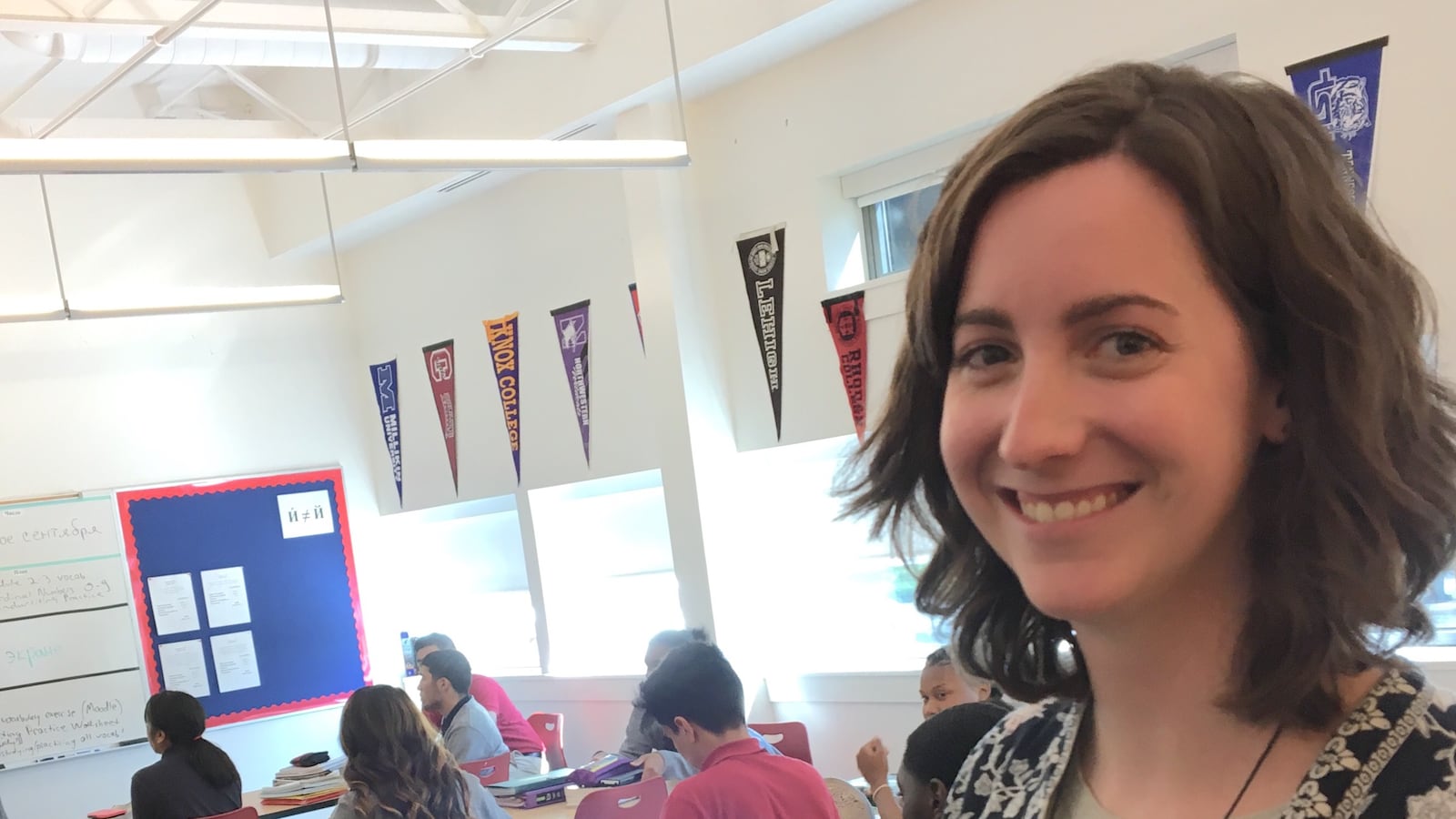Can a robot help Chicago students graduate from college?
Perhaps not in the obvious sense — the College Bot deployed by the Noble charter network doesn’t write papers or help cram for exams. But the Bot — actually an algorithm developed by the network’s chief college officer — aims to steer students toward college success by helping them find colleges they’re more likely to complete.
Noble introduced its College Bot during the 2012-13 school year, and in its five years of operation it has spurred Noble students to select colleges whose graduation rates are 10 percentage points higher than they were selecting previously — 52 percent compared with 42 percent.
Getting kids into college is the mantra of dozens of programs up-and-running in Chicago schools — and the district credits such groups as the college readiness outfits OneGoal and Thrive for helping boost college enrollment figures, like these released last week. But Chicago, like many cities with high percentages of poor students, struggles to keep students in two- and four-year colleges.
Noble Network is 98 percent African-American and Latino, and in 2016, the most recent year for which four-year college data is available, 80 percent of Noble graduates matriculated directly to four-year colleges, compared with 42 percent for Chicago schools’ students overall.
The College Bot’s premise is simple: By comparing a list of college admissions and performance data with a student’s grades, standardized test scores, and ethnicity, the Bot spits out a list of top-ranked schools where the student is likely to be admitted and to receive an attractive financial aid package, and also rates the schools based on their track record of graduating students.
The computerized lists “are incredibly predictive,” said Matt Niksch, the College Bot’s creator, and thus effective in helping students zero in on schools that are likely to admit them and offer financial aid. But the College Bot’s real magic is in suggesting a broader pool of colleges than Noble’s students would otherwise consider, and in encouraging students to strongly consider college graduation rates in their decision-making.
The broader pool matters because Noble’s students often default either to local colleges with poor graduation rates or to state schools with big-name sports teams.
Using the Bot, “students are accessing schools that they may never have considered before, such as small liberal arts colleges,” said Sarah MacCallum, director of college counseling at Noble Academy, a Noble high school in Lincoln Park.
Dakota DeVore, a senior at Noble Academy, said that before using the Bot, she had heard of only a handful of colleges — certainly not Lafayette College, a liberal arts school of about 2,500 students that sits on the Delaware River in a small town near Allentown, Pennsylvania. But the Bot suggested it, and after talking it over with a college counselor at Noble, DeVore has the school atop the list of those she’s considering.
The College Bot “really helped me to figure out what I wanted in a college, and also just what’s out there,” DeVore said.
It can seem like a jolt for city kids such as DeVore to consider small, rural colleges, but often those schools make for good fits.
“Small liberal arts colleges in the middle of nowhere frequently are schools that have tons of support and are actually going to work really hard to help students deal with challenges,” Niksch said.
That, in turn, points to Noble’s emphasis on a college’s track record of graduating students — especially minority students. That focus is well-founded, according to research conducted by the University of Chicago’s Consortium on School Research.
“If you take relatively similar colleges, and one has a higher institutional graduation rate, that has an impact on your likelihood of graduating that is on par with your own academic qualifications going into college,” said Jenny Nagaoka, the consortium’s deputy director.
Noble doesn’t yet have data on how that affects its students’ likelihood of college success, but is beginning to study that, too, now that the tool has been in use long enough to track a graduating class through four years on campus.
Noble has deployed the College Bot throughout its network of 17 high schools, whose 12,000 students account for about 11 percent of Chicago Public Schools’ high-school students. But Niksch doesn’t see it as a proprietary advantage, and shares it freely with other schools; about a dozen charter networks nationwide use it.
Niksch also stresses that the College Bot is meant to complement, not replace, each counselor’s insight and each student’s decision-making.
“Kids aren’t bots; they have hopes and dreams and preferences,” Niksch said. “We try to guide them where they’re likely to be successful, while still giving them plenty of freedom and plenty of choice.”

